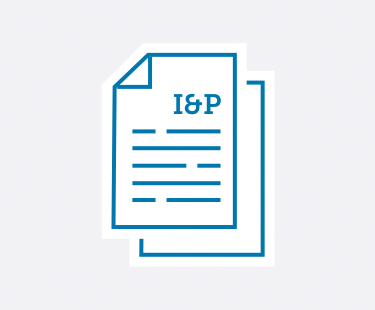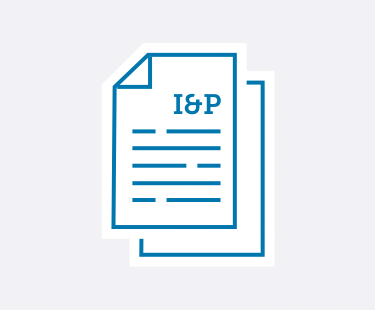

Learn practical strategies to handle emerging trends and leadership challenges in private schools.
No matter if you’re a School Head, Admission Director, Development Director, Board member, or any other private school administrator—Ideas & Perspectives®, ISM’s premier private school publication, has strategic solutions for the pervasive problems you face.
- Tuition not keeping pace with your expenses? In I&P, explore how to use strategic financial planning to create your budget and appropriately adjust your tuition.
- Enrollment dropping off? Discover how to implement the right admission and enrollment management strategies that engage your community—and fill your classrooms.
- Trouble retaining teachers? Learn how you can best support your teachers using ISM’s Comprehensive Faculty Development framework. Your faculty members will become more enthusiastic about their roles—which ultimately improves student outcomes.
- Fundraising campaigns not as successful as you’d hoped? Implement ISM’s practical advice and guidance to build a thriving annual fund, construct an effective capital campaign, and secure major donors—no matter your community size or location.
- Not sure how to provide professional development—for you and your staff? Learn ways to develop and fund a successful professional development strategy. You can improve teacher-centered satisfaction and growth, which in turn strengthens student-centered learning.
- Problematic schedule? You can master the challenges of scheduling with the help of ISM’s practical advice, based on our experience with hundreds of schools and our time-tested theories.
- And so much more.
I&P has shared targeted research, up-to-date insight, and sound theory with school leaders since 1975. More than 8,500 private school decision-makers find the answers to their schools’ administrative and governance matters in our advisory letter. We give you the strategic answers you need.
As an ISM Silver or Gold member, you not only receive issues online and in print 10 times a year, but you have access to 900+ articles in our web archive. Need help? It’s at your fingertips! Learn more and sign up for ISM's membership here.
Search
See the articles from our latest issue of Ideas & Perspectives.
Hiring and Orienting Your New Advisors
Volume 28 No. 16 // December 21, 2003
In ISM’s experience, the most frequently expressed administrative concern about the advisory program is unevenness in the quality of adviser functioning. Teachers’ motivation, skill, “buy-in,” and overall professionalism in this role often vary considerably. Clarity about the role—its purposes, priorities, limits, and sources of assistance—provides focus. This clarity and focus, for those with less affinity for the role of adviser, instills a sense that the job is “do-able” (i.e., not an “all-things-to-all-people” set of responsibilities). These boundaries also “rein in” any faculty who tend to overdo (i.e., become over-involved in the lives of their advisees). On a broader level, this kind of clarity implicitly makes advising more professional and contributes to a culture that values professional development in this role on behalf of students.
1. Already a member? Click here to login.
2. Not a member? Click here to become a member.
3. Not sure? We'll help you figure it out.
Board/Head Relationships: Brutal Facts and Eternal Faith
Volume 28 No. 16 // December 21, 2003
Jim Collins, in his book From Good to Great, quotes Winston Churchill: "There is no worse mistake in public leadership than to hold out false hopes soon to be swept away." The chapter this quotation prefaces is "Confront the Brutal Facts Yet Never Lose Faith." This is a great paradigm for your Board to consider when either hiring a new Head of School or evaluating the present Head.
1. Already a member? Click here to login.
2. Not a member? Click here to become a member.
3. Not sure? We'll help you figure it out.
Interdependence That Brings Financial Independence
Volume 28 No. 15 // November 28, 2003
As Head of School, you understand the impact full enrollment and successful fund raising can have on the fiscal well being of the school. It is critical to the continued success of student recruitment and retention—as well as the annual, capital, and endowment campaigns—that you promote a collaborative relationship between the Admission Office and the Development Office. These two offices share a common goal: to further the institutional mission and to generate revenue in ways appropriate to that mission and the core values of your school. To fulfill this common goal, the approaches of the Development Office and the Admission Office should complement one another in these three ways.
1. Already a member? Click here to login.
2. Not a member? Click here to become a member.
3. Not sure? We'll help you figure it out.
The Role of the Academic Management Team
Volume 28 No. 15 // November 28, 2003
What is the real job of the Academic Management Team (i.e., Deans, Division Heads, and Department Heads) at your school? It often seems that those who report to the Head of School have an overwhelming array of responsibilities. Job descriptions are diffuse and often end with the ubiquitous phrase (or assumption) “and other tasks as required.”
1. Already a member? Click here to login.
2. Not a member? Click here to become a member.
3. Not sure? We'll help you figure it out.
Faculty Renewal and Retention: The Wellness Way
Volume 28 No. 14 // November 4, 2003
“Teachers rank second only to air traffic controllers in terms of stress.” - Dr. Milbrey McLaughlin, cited in High Energy Teaching (ISM, 1993) Teachers have an avid interest in working with children and adolescents, and in helping them grow and mature in every aspect of their character. As teachers continue in their profession, however, evidence indicates many deteriorate rather than renew, or leave the profession rather than commit long term. An Education Week survey reveals that 20% of new teachers leave the classroom after three years, and 50% quit after five. Although their original motivation may not burn out, their ability to renew and revive often does.
1. Already a member? Click here to login.
2. Not a member? Click here to become a member.
3. Not sure? We'll help you figure it out.
Scheduling Professional Development for Faculty and Staff
Volume 28 No. 14 // November 4, 2003
Professional development is essential to the stability and strength of your school, and ISM always recommends that schools have strong programs in place. It is one of the few areas in school operation where you can receive a maximum return for minimum expense. Professional development is the core element of ISM’s evaluation systems, Meaningful Faculty Evaluation™ and Strategic Management Evaluation™.
1. Already a member? Click here to login.
2. Not a member? Click here to become a member.
3. Not sure? We'll help you figure it out.
Technology Self-Assessment and Your Strategic Plan
Volume 28 No. 13 // October 14, 2003
ISM suggests that you, as Board President, think of strategic planning as a quadrennial activity. During the months prior to the day(s) on which you will gather your Board and Head (and, if appropriate, other senior administrators) for the planning event itself, data gathering is usually in order. For example, many Boards conduct a current parent survey in order to provide themselves with a sense of that constituent group’s strategic excitements, interests, and concerns, thereby widening the participation circle indirectly beyond that of the planners themselves. A similar survey of faculty/staff, young alumni, and former parents may be productive. Certainly, comparative data such as faculty salary and fringe benefit benchmarks will enhance the quality of the strategic planning process itself, as will a thoughtful self-scoring on ISM’s Stability Markers®.
1. Already a member? Click here to login.
2. Not a member? Click here to become a member.
3. Not sure? We'll help you figure it out.
Generational Differences and Leadership in Your School
Volume 28 No. 12 // September 27, 2003
In their recent book, Geeks and Geezers: How Era, Values, and Defining Moments Shape Leaders, (Boston: Accenture LLP, 2002), Warren Bennis and Robert Thomas have isolated what they believe are the four essential characteristics that all leaders share. In the process the authors feel they have defined “how leaders come to be.” Their findings should be of great interest to you as a Head of School—the day-to-day leader.
1. Already a member? Click here to login.
2. Not a member? Click here to become a member.
3. Not sure? We'll help you figure it out.
Courtesy and Professionalism: Your Administrative/Faculty Culture
Volume 28 No. 12 // September 27, 2003
Courtesy and professionalism are contagious, as are their opposites. As Head, you want to have a better grasp of how effectively your school’s non-instructional personnel display these qualities when dealing with your faculty members and with each other. After all, your employees will always tend to be on their best behavior when you are nearby.
1. Already a member? Click here to login.
2. Not a member? Click here to become a member.
3. Not sure? We'll help you figure it out.
How High-Achieving Students Search for a College
Volume 28 No. 11 // September 2, 2003
As Director of College Counseling, you are responsible for providing one of the most critical services your school can offer. While parents set academic excellence and next-level placement as high priorities when they select your school, the college-bound teenager ideally makes the primary decisions when it comes to selecting a college. It is your job to help students find the institutions of higher education that best match their interests, needs, and abilities. What are the key avenues students use today to find appropriate colleges—and what can you do to ensure your program steers them in the right direction?
1. Already a member? Click here to login.
2. Not a member? Click here to become a member.
3. Not sure? We'll help you figure it out.


